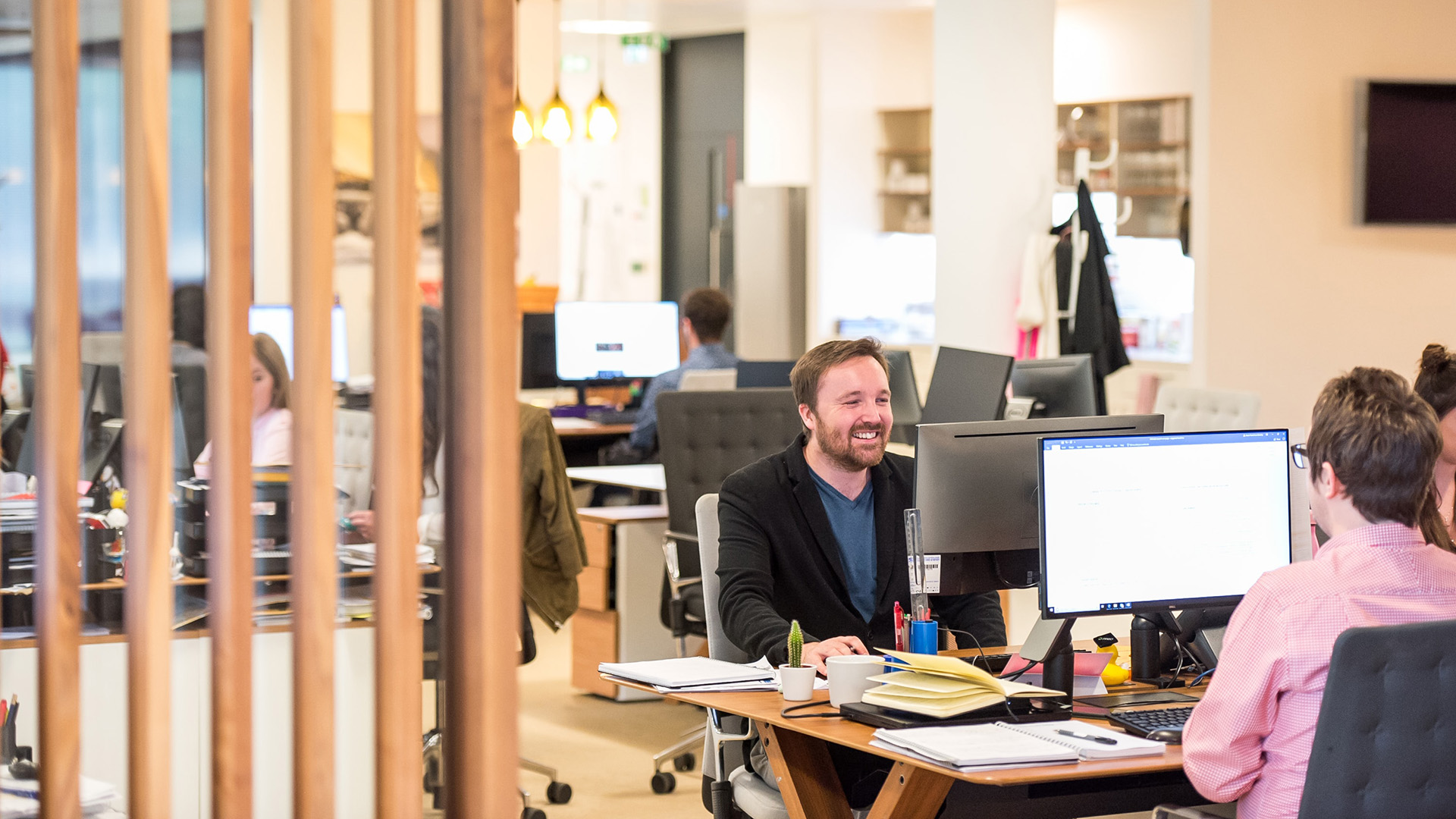What is going to be your primary focus in 2022?
Watching a squirrel dart up a tree to perch on a branch holding on tightly to his newfound treasure – a hazelnut, I wondered, how does this little fellow stay so bright-eyed and bushy-tailed?
Being a squirrel isn’t just about nuts and happy squirrel dancing. There are plenty of foxes around who would love a quick squirrel snack, but happiness for squirrels at work, from what I can see, is having ready access to a good supply of food, a safe place to sleep and a mate to make babies with. Not a bad life really.
But what about you?
Is your nut supply is looking a bit low, and if so, what will you be focusing on next to rectify the situation for 2022?
Are you looking to advance in your chosen career, perhaps get a promotion or take on a new role?
Are you hoping the next 12 months will be a little kinder to your business and the world’s population?
Are you intending to embrace the New Revolution of living a healthier and fulfilling life?
Or will it be something else entirely?
Whatever your focus, you will have chosen it for a reason and for many, workplace wellbeing is taking top place.
Workplace wellbeing is now seen, not as a nice to have, but an imperative to the creation of healthy and positive workplaces that are attractive to work in.
Considering we spend 1/3 of our lives in this place called work, a regular review of current workplace practices and the environment is called for to stay up to date and optimised for top efficacy, productivity, and performance.
By making the modern workplace fit for purpose every employee is provided the potential for further professional growth and development, a place of safety, and a culture of care.
This is good for the individual, for teams, and for organisations great and small.
Humanising the workplace begins by recognising what we as humans need to function at our best.
There are five elements to consider when creating a humanised and positive workplace.
a) Safety first (always)
b) Positive emotions
c) Positive communication
d) Positive leadership
e) Finding meaning
1. Safety first
I find it bewildering when I see tremendous effort being put into “making the right hire” and then seeing the recruit left to flounder, without instruction around expectations, clarity of role, introduction to colleagues or current workplace practices.
No matter how smart you are or how good your resume, if you are left with a pile of uncertainty, fear of making a mistake or other toxic workplace practices it’s going to be hard to demonstrate what you’re truly capable of, or, feel part of the team.
Safety at work must include psychological safety, otherwise the organisation or business is at risk of not only losing its best staff, but also its reputation and position as market leader.
Building safety isn’t hard, but it does require commitment and buy in from everyone at work, and continuous review. The modern workplace is a living dynamic organism meaning what is working well today may be outmoded in three or six months.
Safety starts with having a sense of belonging, being included, being understood, listened to, and being shown courtesy, fairness and respect.
- Try encouraging regular open and honest conversations where there is no judgement.
- Or hold meetings where positive outcomes and wins are celebrated at the beginning.
- Or take the time to say thank you and show your appreciation for an outstanding piece of work, or for a colleague going out of their way to help a fellow team member.
- Or encourage exploration of ideas because the risk of failure isn’t allowed get in the way.
2. Encourage positive emotions
When you find yourself standing in front of the wardrobe in the morning trying to decide which item of emotion to wear, remember it’s your choice, but why not ask which one will work best to enable you to get the most out of your day?
You don’t have to wear sunshine yellow all the time, sometimes it’s more appropriate to go with a more conservative blue or green, depending on who you’ll be with, what you’ll be doing and what you hope to achieve.
Studies have shown that expressing more positive emotion more often, not only boosts your mood but also elevates the collective state of mind, elevating cooperation, discretionary effort, focus and greater enjoyment in completing the task. Bonus! Not only that you’ll show your more creative and innovative side, solve challenges more easily, have access to more insight and the opportunity to find yourself in that delicious state of flow.
And if you don’t consider yourself an extrovert, a positive person, or an optimist, you can still benefit from setting the intention to look for the positives more often, even if you’ll never be caught wearing a pink elephant onesie suit to celebrate your win.
Try asking,
- What do I need to do today to achieve my goal and feel good about myself and my work?
- What would it be like if I knew I could not fail?
- How can I put a smile on someone else’s face as well as my own?
Asking sets you on the road to greater positive emotion.
3. Encourage positive communication
As a child, I was always told “if you don’t have anything nice to say, don’t say anything at all.”
While this is partly true, because some folks have an unfortunate propensity to take the meaning of “free speech” as an open invitation to say nasty and unpleasant things, studies have shown that being exposed to the silent treatment is far more hurtful, especially when you don’t what misdemeanour it is you’re supposed to have committed.
Far better to have open and honest conversations that don’t seek to cause hurt or offence. A robust conversation can be a positive thing, even if you end up agreeing to disagree.
Positive communication is about encouragement, calling out the good and showing gratitude.
It’s easy to let gratitude slide when things are going well, and your best performers are doing what they always do. Forgetting to say thanks occasionally is a human frailty, but if it’s never remembered, that’s another story.
Make your communication authentic and personal.
“Thanks team!” sounds nice but doesn’t recognise individual contribution. One of our daughter’s biggest gripes at school was when she was put into a group for a project, where only she and perhaps one other did the work. She would get so cross when the group as a whole were congratulated.
Being authentic is also about changing up your acknowledgments. Being told “You’re the best!” feels great the first time round, but if that’s your boss’s sign off at the end of every conversation, those words are going to sound somewhat hollow and insincere very quickly, even if that was never their intention.
- Try pressing pause to stop and acknowledge the good in others. It will make both the recipient and you feel great.
- Or encourage one of your team to take up a new challenge. Those few words of encouragement before they step forward to deliver a presentation, put themselves forward for a new role, or enrol for new learning will boost confidence and ability to overcome nerves and be at their best.
4. Positive leadership
Whether you are leading others or yourself, positive leadership is about recognising we all have blind spots, staying curious to learn more, being willing to share ideas, showing your vulnerability in not having all the answers and asking others to help. Adopting possibility thinking and a mindset of wanting to be the best version of you, enables others to succeed.
Positive leaders lead by example when it comes how they interact and communicate with others, how they conduct their time at work, how they follow healthy lifestyles and communicate their care to their employees and clients.
- Try asking for ideas for a challenge facing the organisation
- Or show you value healthy eating, being sufficiently physically active and getting enough good quality sleep by walking your talk.
- Or show you care by going for a regular ‘pulse’ walk, walking around the office, pausing for an informal chat to ask how things are for them, and what else they need.
- Or communicating regularly in a way that is easily understood, encouraging questions and dialogue.
5. Finding meaning
This isn’t about your job description of what you do, it’s asking the question “what does this work mean to you?”
Depending on how it is framed up you can find meaning in almost everything, even those things you would deem meaningless.
What are some meaningless tasks in your life?
Is it rearranging the 12 pillows on your bed every morning to make it look nice (even though you’re going to toss them all on the floor again tonight)?
Or ironing (because that crisp freshly ironed look is going to have evaporated by 10 o’clock).
Or mowing the lawn (it’s going to grow back).
But maybe your decorative pillow fetish is about making your home look attractive, showing your partner you care about how your home looks. That’s meaningful.
You might loathe ironing, but you know presentation matters in your corporate role, it provides credibility and engenders trust between yourself and your clients. That’s meaningful.
You might hate mowing the grass (why does it keep growing so fast?) but you find that time a space where you can stop thinking about work and appreciate the smell of freshly cut grass and how much neater it makes the garden look. That’s meaningful.
You might not be in the job of your dreams just yet, but this could be the stepping-stone you need to help you get there.
One of my first jobs was working in a canteen at a local factory. Did it provide me with meaning?
Well, perhaps not from a career perspective, but the meaning came from understanding what it meant to hold down a job, to work hard and feel you had done your best to support others in their role on the factory floor. Making 200 buttered bacon rolls and hot sweet tea each morning became something I was proud to do because it meant everyone got to enjoy their morning tea break.
If you’re not sure what gives you meaning in your workplace, ask “what do I enjoy the most about doing this type of work?”, “what do I value?” and “what does this provide to someone else?”
Workplace wellbeing is a holistic ideal. It’s not about perfection, but the satisfaction of knowing you’re doing a great work in a place that supports and nurtures your skills, allows you to work with others you like, and enables you to honour your non-negotiable lifestyle choices to be your best bright-eyed bushy-tailed self. It’s a joint venture where every individual and the organisation share the responsibility of making it work well.
What great wellbeing practices have you seen put into place in your workplace?
What else could be added to make it even better?
Dr Jenny Brockis is a medical practitioner and board-certified lifestyle medicine physician, keynote speaker and best-selling author. Her new book Thriving Mind: How to Cultivate a Good Life (Wiley) is now available for purchase
If psychological safety, resilience and mental wellbeing is something you’d like to find out more about, please contact me to set up a time for a chat.


